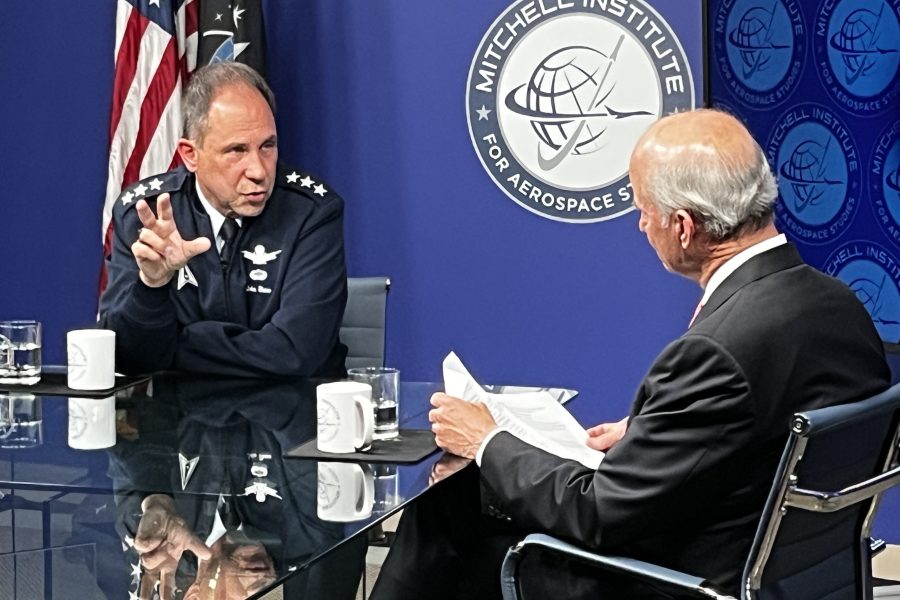American military space operations are due for a significant overhaul to boost the Pentagon’s capability to deal with growing threats from China and Russia, the deputy commander of U.S. Space Command said July 6.
“The way we’ve been doing space operations since the dawn of the space age, we’ve been doing it wrong,” Space Force Lt. Gen. John E. Shaw, SPACECOM’s highest-ranking Guardian, said during an event at AFA’s Mitchell Institute for Aerospace Studies. Shaw said there could be a “fundamental doctrinal shift” toward more “dynamic space operations.”
While the U.S. military is increasingly emphasizing space capabilities, the Pentagon is still articulating how it should use the space domain in the future.
Some of the debate revolves around organizational issues. The U.S. Space Command was established in late 2019 as a geographic—or, as Shaw prefers, “astrographic”—combatant command responsible for military operations that are 100 kilometers over sea level and extend beyond. The Space Force was established as an independent service later that year.
That has led to some uncertainty about the division of responsibilities between SPACECOM and the Space Force. The Space Force also has its components within geographic commands, though Shaw noted those Guardians must follow the direction of their respective commanders when employing space capabilities.
“I do think that’s still going to evolve as well,” Shaw said of the component roles. “We need the Space Force components in the theaters.”
Shaw said those would likely focus on the “operational level … to make sure that the integration of space-based capabilities is as effective as it can possibly be in every and any scenario.”
Another question concerns doctrine and who will develop it. Currently, there is one joint publication on the domain, Joint Publication 3-14, which is simply titled “Space Operations.”
“I’ve asked the probing question, ‘Is one volume sufficient?’ And I think the answer is no,” Shaw said.
“I think we’re going to end up having several joint publications probably along the lines of Space Command and Control, Space Superiority Operations,” Shaw added.
One thing Shaw is sure of is that the U.S. must become more agile about how it conducts operations in space.
Previously, the U.S. military spent years developing expensive satellites designed to stay in service for many years. To mitigate the risks from Chinese and Russian anti-satellite weapons, the Space Force has pushed for cheaper, more proliferated satellites.
SPACECOM, Shaw said, is doing its part by pushing for more flexible operations. With anti-satellite weapons, jamming, and the possibility that the U.S. might conduct offensive space operations, largely static platforms will be inadequate.
The old way of doing things was “positional space operations,” Shaw said. “We launch a platform into orbit and we tend to leave it right in that orbit.”
“That’s not going to be sufficient anymore,” Shaw said. “We can’t have those constraints in the future. And so we’re trying to articulate a requirement to the Space Force that we need to be able to have sustained space maneuver for those platforms.”
